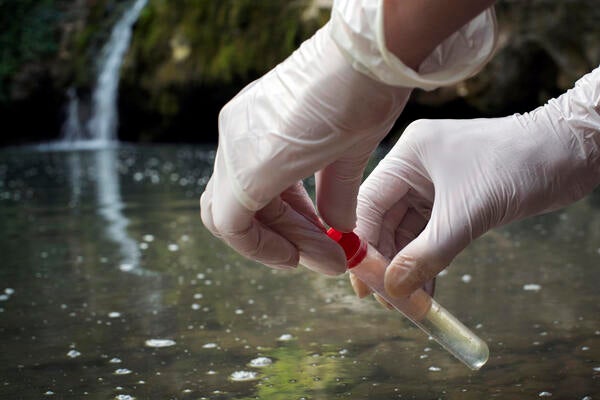
Predicting infant risk of exposure to mother’s medication
Study is first to examine drug exposure in both the womb and breast milk

Study is first to examine drug exposure in both the womb and breast milk
By Media RelationsA new mathematical model developed at the University of Waterloo can determine a baby’s overall drug exposure when their mother is taking medication. This is the first study to include drug transfer from the umbilical cord and through breastfeeding in determining the baby's total drug levels.
The research team from the School of Pharmacy at Waterloo looked specifically at Levetiracetam. It is a drug commonly prescribed long term for women with epilepsy, yet there was minimal data on the risk of adverse effects on breastfed infants.
Breastfeeding mothers often face the hard choice of continuing to take their medication and risking harm to their babies due to exposure during feeding, or stopping potentially life-saving treatments. The World Health Organization and UNICEF recommend that infants breastfeed within an hour of birth and do so exclusively for six months.
“A mother can be at serious risk if Levetiracetam is stopped, affecting her ability to care for her infant,” said Shirley Wang, a PhD student in the School of Pharmacy at Waterloo. “Our research shows that the probability of negative effects on a breastfeeding infant is very low for typically prescribed doses of Levetiracetam.”
The team built the mathematical model using physiologically based pharmacokinetic (PBPK) modelling, to determine the overall infant exposure to the drug.
“We included both womb and breast milk exposure in our newborn-infant model, which we’ve coined the cord-coupled model (CCM), to gain a more accurate picture of drug exposure to infants during their most vulnerable time in the first weeks of life,” Wang said.
“We also included in the PBPK model infant anatomy and physiology, the volume of breast milk consumed and the drug concentrations in breast milk for more accurate results,” said Dr. Santosh Suryavanshi, research associate at the School of Pharmacy.
Clinical data for infants is still lacking for many drugs. The study’s model can help in the assessment of other commonly prescribed drugs that breastfeeding mothers might take.
“There has always been limited data in specific populations due to the risks associated with clinical trials,” Suryavanshi said. “This mathematical modelling is a tool researchers can use to determine drug exposures to improve the quality of life for both mother and infant.”
The study, Coupling Pre‑ and Postnatal Infant Exposures with Physiologically Based Pharmacokinetic Modeling to Predict Cumulative Maternal Levetiracetam Exposure During Breastfeeding, was recently published in Clinical Pharmacokinetics.

Read more
Waterloo research is leading the fight against an invasive plant threatening Ontario wetlands

Read more
Wastewater monitoring indicates early upward trends in COVID-19 and Influenza

Read more
The InnoHK Centre for Eye and Vision Research aims to bring eye and vision research to market through Waterloo-Hong Kong partnership
The University of Waterloo acknowledges that much of our work takes place on the traditional territory of the Neutral, Anishinaabeg, and Haudenosaunee peoples. Our main campus is situated on the Haldimand Tract, the land granted to the Six Nations that includes six miles on each side of the Grand River. Our active work toward reconciliation takes place across our campuses through research, learning, teaching, and community building, and is co-ordinated within the Office of Indigenous Relations.